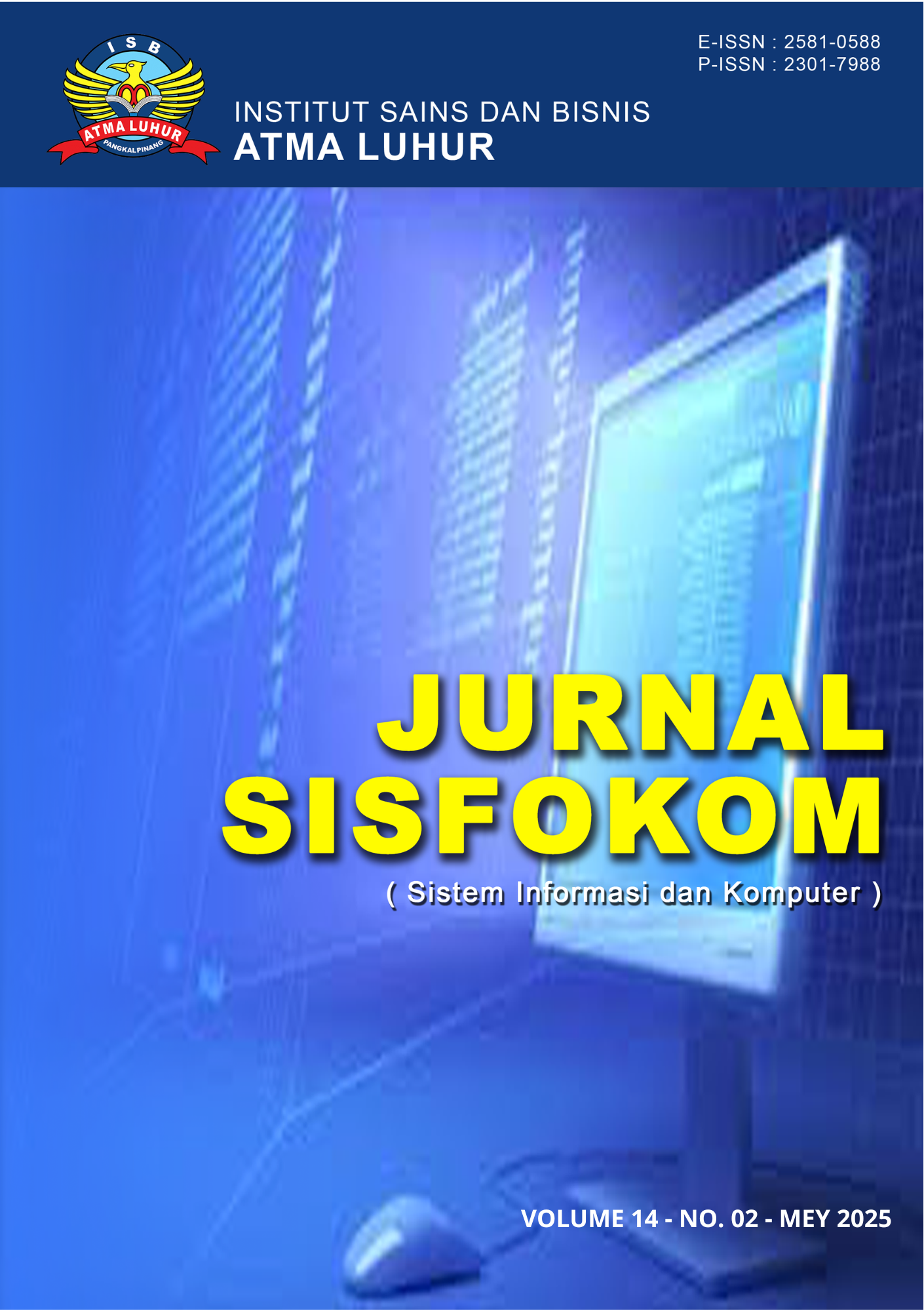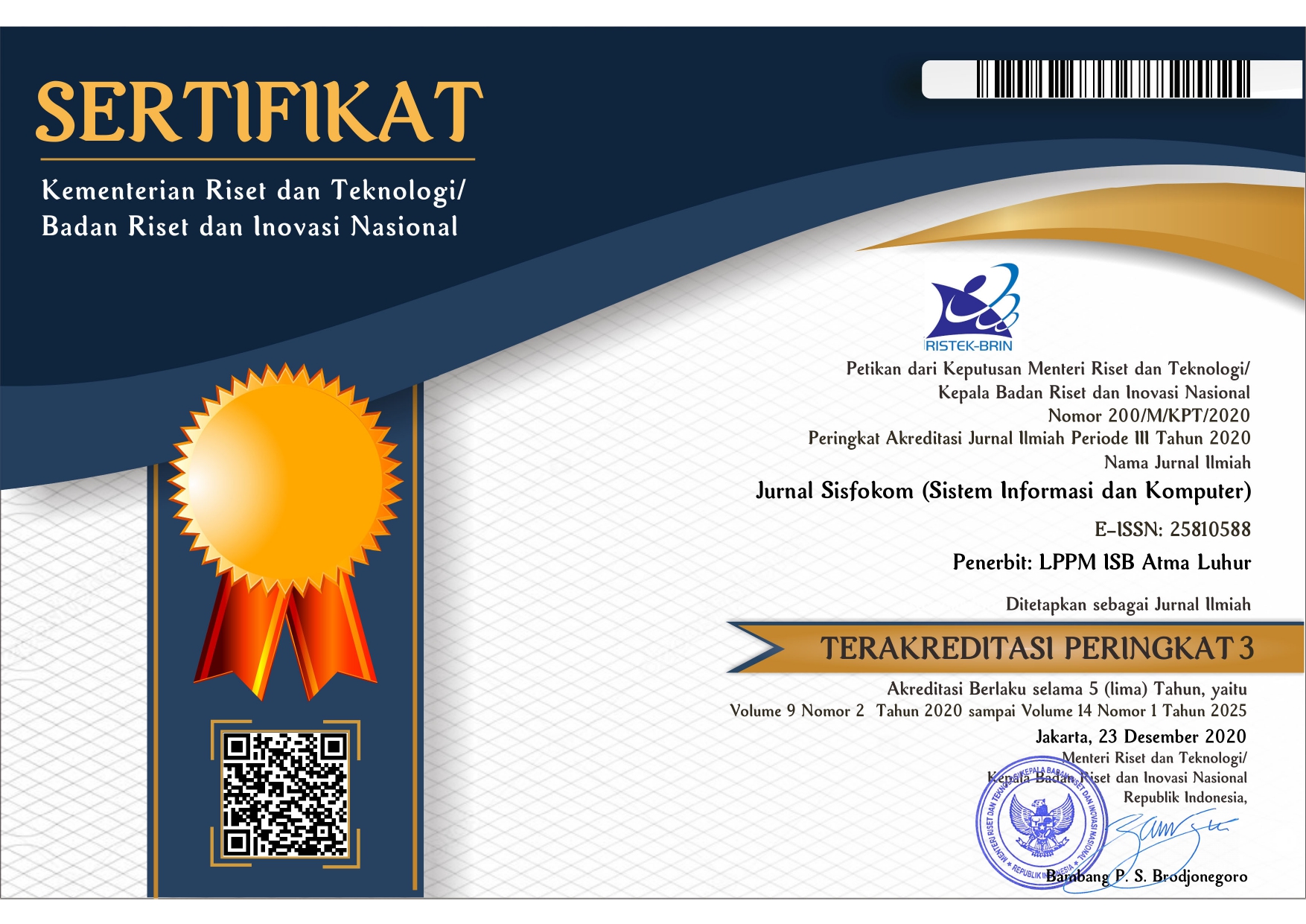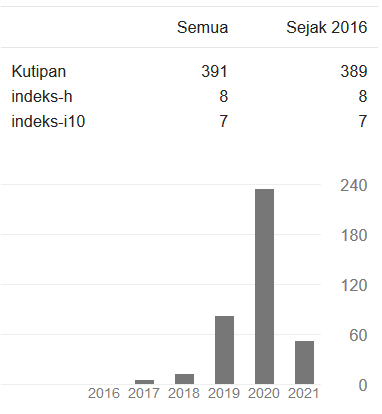Trend Analysis and Prediction of Violence Against Women and Children Cases in Jakarta Based on the Victim’s Education Level Using ARIMA and SARIMA Method
DOI:
https://doi.org/10.32736/sisfokom.v14i2.2349Keywords:
Arima, Child Violence, Education, Sarima, Gender-Based and Child-Directed ViolenceAbstract
Violence against women and children remains a critical social issue in Jakarta, Indonesia, where densely populated urban areas often correlate with increased risks of domestic abuse. The urgency of addressing this problem lies in its direct impact on public health, education, and community well-being. This study uses time series prediction models to examine and anticipate trends in the number of reported incidents of violence against women and children in Jakarta. Using publicly accessible data from Jakarta Open Data and the National Commission for the Protection of Women and Children, we applied the ARIMA and SARIMA Models. Key variables included in the dataset are the data period, education level, and total number of victims Using three performance indicators—MAE (Mean Absolute Error), MAPE (Mean Absolute Percentage Error), and RMSE (Root Mean Square Error)—to assess model accuracy the ARIMA model performed better than the SARIMA model. SARIMA recorded an RMSE of 80.26, an MAE of 66.21, and an undefined MAPE because of zero values in the real data, while ARIMA specifically obtained an RMSE of 32.22, an MAE of 32.09, and a MAPE of 5.19%. These results suggest that the non-seasonal ARIMA model is more suitable for this dataset. The study contributes to policy planning and early intervention strategies by offering a data-driven approach to predicting trends in violence within urban contexts.References
M. Myall, S. Morgan, and S. Scott, “Editorial: Domestic violence and abuse: increasing global and intersectional understanding,” Frontiers in Health Services, vol. 4, Sep. 2024, doi: 10.3389/frhs.2024.1465688.
A. Bluschke, N. Faedda, J. Friedrich, and E. J. Dommett, “Editorial: Women in psychiatry 2023: ADHD,” Front Psychiatry, vol. 15, Aug. 2024, doi: 10.3389/fpsyt.2024.1447958.
Y. F. Wismayanti, P. O’Leary, C. Tilbury, and Y. Tjoe, “Child sexual abuse in Indonesia: A systematic review of literature, law and policy,” Child Abuse Negl, vol. 95, p. 104034, Sep. 2019, doi: 10.1016/j.chiabu.2019.104034.
A. L. Wirtz et al., “Development of a screening tool to identify female survivors of gender-based violence in a humanitarian setting: qualitative evidence from research among refugees in Ethiopia,” Confl Health, vol. 7, no. 1, p. 13, Dec. 2013, doi: 10.1186/1752-1505-7-13.
C. Stoicescu, B. Medley, E. Wu, N. El-Bassel, P. Tanjung, and L. Gilbert, “Synergistic effects of exposure to multiple types of violence on non-fatal drug overdose among women who inject drugs in Indonesia,” International Journal of Drug Policy, vol. 129, p. 104486, Jul. 2024, doi: 10.1016/j.drugpo.2024.104486.
N. Lepcha and S. Paul, “Exploring Violence Against Children Under Sustainable Development Goals,” 2021, pp. 286–296. doi: 10.1007/978-3-319-95687-9_72.
Ore-ofe Loveth Oluwajobi, Chidinma Favour Udechukwu, and Toluwanimi Oreoluwa Arogundade, “Understanding the impact of domestic violence on children’s mental health and exploring effective intervention strategies,” World Journal of Advanced Research and Reviews, vol. 23, no. 3, pp. 1405–1418, Sep. 2024, doi: 10.30574/wjarr.2024.23.3.2812.
Riswanda, J. McIntyre-Mills, and Y. Corcoran-Nantes, “Prostitution and Human Rights in Indonesia: A Critical Systemic Review of Policy Discourses and Scenarios,” Syst Pract Action Res, vol. 30, no. 3, pp. 213–237, Jun. 2017, doi: 10.1007/s11213-016-9393-4.
G. Dhamija, P. Roychowdhury, and B. Shankar, “Does urbanization empower women? Evidence from India,” J Popul Econ, vol. 38, no. 1, p. 27, Mar. 2025, doi: 10.1007/s00148-025-01085-4.
A. Al Mutair et al., “Domestic violence and childhood trauma among married women using machine learning approach: a cross-sectional study,” BMC Public Health, vol. 25, no. 1, p. 1340, Apr. 2025, doi: 10.1186/s12889-025-22537-2.
D. Rukmana and D. Ramadhani, “Income Inequality and Socioeconomic Segregation in Jakarta,” 2021, pp. 135–152. doi: 10.1007/978-3-030-64569-4_7.
O. O. Okedare, M. M. Salawu, and O. I. Fawole, “Intimate partner violence and quality of life of young women in urban slum and non-slum communities, Ibadan, Nigeria,” BMC Public Health, vol. 25, no. 1, p. 1199, Mar. 2025, doi: 10.1186/s12889-025-22385-0.
Md. R. Kabir, S. Ghosh, and A. Shawly, “Causes of Early Marriage and Its Effect on Reproductive Health of Young Mothers in Bangladesh,” Am J Appl Sci, vol. 16, no. 9, pp. 289–297, Sep. 2019, doi: 10.3844/ajassp.2019.289.297.
D. Tunas and A. Peresthu, “The self-help housing in Indonesia: The only option for the poor?,” Habitat Int, vol. 34, no. 3, pp. 315–322, Jul. 2010, doi: 10.1016/j.habitatint.2009.11.007.
Mr. B. R. A. -, “Harnessing Technology and Data Analytics to Advance Prevention and Treatment in the Opioid Crisis,” International Journal For Multidisciplinary Research, vol. 5, no. 5, Oct. 2023, doi: 10.36948/ijfmr.2023.v05i05.31737.
Y. Cao et al., “Recognize Human Activities from Partially Observed Videos,” in 2013 IEEE Conference on Computer Vision and Pattern Recognition, IEEE, Jun. 2013, pp. 2658–2665. doi: 10.1109/CVPR.2013.343.
J. W. Petty, “Research in Small-Firm Entrepreneurial Finance: A Note on Developing a Paradigm,” The Journal of Entrepreneurial Finance, vol. 1, no. 1, pp. 88–90, Dec. 1991, doi: 10.57229/2373-1761.1114.
A. A. Fagan et al., “Scaling up Evidence-Based Interventions in US Public Systems to Prevent Behavioral Health Problems: Challenges and Opportunities,” Prevention Science, vol. 20, no. 8, pp. 1147–1168, Nov. 2019, doi: 10.1007/s11121-019-01048-8.
G. M. Campedelli, A. Aziani, and S. Favarin, “Exploring the Immediate Effects of COVID-19 Containment Policies on Crime: an Empirical Analysis of the Short-Term Aftermath in Los Angeles,” American Journal of Criminal Justice, vol. 46, no. 5, pp. 704–727, Oct. 2021, doi: 10.1007/s12103-020-09578-6.
H. Seyidoglu, G. Farrell, A. Dixon, J. Pina-Sánchez, and N. Malleson, “Post-pandemic crime trends in England and Wales,” Crime Sci, vol. 13, no. 1, p. 6, Mar. 2024, doi: 10.1186/s40163-024-00201-1.
S. Yao et al., “Predicting Land Use Changes under Shared Socioeconomic Pathway–Representative Concentration Pathway Scenarios to Support Sustainable Planning in High-Density Urban Areas: A Case Study of Hangzhou, Southeastern China,” Buildings, vol. 14, no. 7, p. 2165, Jul. 2024, doi: 10.3390/buildings14072165.
C. V. Redoblo, J. L. G. Redoblo, R. A. Salmingo, C. M. Padilla, and J. C. T. Arroyo, “Forecasting the influx of crime cases using seasonal autoregressive integrated moving average model,” International Journal of ADVANCED AND APPLIED SCIENCES, vol. 10, no. 8, pp. 158–165, Aug. 2023, doi: 10.21833/ijaas.2023.08.018.
S. Siamba, A. Otieno, and J. Koech, “Application of ARIMA, and hybrid ARIMA Models in predicting and forecasting tuberculosis incidences among children in Homa Bay and Turkana Counties, Kenya,” PLOS Digital Health, vol. 2, no. 2, p. e0000084, Feb. 2023, doi: 10.1371/journal.pdig.0000084.
M. K. Lubeya et al., “Using the ARIMA Model to forecast sexual and gender-based violence cases reported to a tertiary hospital in Lusaka, Zambia,” PAMJ - One Health, vol. 5, 2021, doi: 10.11604/pamj-oh.2021.5.4.27590.
A. Anavatan and E. Y. Kayacan, “Investigation of femicide in Turkey: modeling time series of counts,” Qual Quant, vol. 58, no. 3, pp. 2013–2028, Jun. 2024, doi: 10.1007/s11135-023-01619-6.
S. Rashid, “Impact of COVID-19 on Selected Criminal Activities in Dhaka, Bangladesh,” Asian J Criminol, vol. 16, no. 1, pp. 5–17, Mar. 2021, doi: 10.1007/s11417-020-09341-0.
A. Luong et al., “Comparison of Machine Learning Models to a Novel Score in the Identification of Patients at Low Risk for Diabetic Retinopathy,” Ophthalmology Science, vol. 5, no. 1, p. 100592, Jan. 2025, doi: 10.1016/j.xops.2024.100592.
F. Bolikulov, R. Nasimov, A. Rashidov, F. Akhmedov, and Y.-I. Cho, “Effective Methods of Categorical Data Encoding for Artificial Intelligence Algorithms,” Mathematics, vol. 12, no. 16, p. 2553, Aug. 2024, doi: 10.3390/math12162553.
Z. Liang and M. T. Ismail, “Advanced CEEMD hybrid model for VIX forecasting: optimized decision trees and ARIMA integration,” Evol Intell, vol. 18, no. 1, p. 12, Feb. 2025, doi: 10.1007/s12065-024-00984-x.
Y. Shen et al., “Near real-time corn and soybean mapping at field-scale by blending crop phenometrics with growth magnitude from multiple temporal and spatial satellite observations,” Remote Sens Environ, vol. 318, p. 114605, Mar. 2025, doi: 10.1016/j.rse.2025.114605.
R. Refinetti, “Non-stationary time series and the robustness of circadian rhythms,” J Theor Biol, vol. 227, no. 4, pp. 571–581, Apr. 2004, doi: 10.1016/j.jtbi.2003.11.032.
K. M. Wantzen, K.-O. Rothhaupt, M. Mörtl, M. Cantonati, L. G.-Tóth, and P. Fischer, “Ecological effects of water-level fluctuations in lakes: an urgent issue,” Hydrobiologia, vol. 613, no. 1, pp. 1–4, Nov. 2008, doi: 10.1007/s10750-008-9466-1.
S. Putri and A. Sofro, “Peramalan Jumlah Keberangkatan Penumpang Pelayaran Dalam Negeri di Pelabuhan Tanjung Perak Menggunakan Metode ARIMA dan SARIMA,” MATHunesa: Jurnal Ilmiah Matematika, vol. 10, no. 1, pp. 61–67, Apr. 2022, doi: 10.26740/mathunesa.v10n1.p61-67.
V. P. Ariyanti and Tristyanti Yusnitasari, “Comparison of ARIMA and SARIMA for Forecasting Crude Oil Prices,” Jurnal RESTI (Rekayasa Sistem dan Teknologi Informasi), vol. 7, no. 2, pp. 405–413, Mar. 2023, doi: 10.29207/resti.v7i2.4895.
Elvina Catria, A. A. Putra, D. Permana, and D. Fitria, “Adding Exogenous Variable in Forming ARIMAX Model to Predict Export Load Goods in Tanjung Priok Port,” UNP Journal of Statistics and Data Science, vol. 1, no. 1, pp. 31–38, Feb. 2023, doi: 10.24036/ujsds/vol1-iss1/10.
Downloads
Published
Issue
Section
License

This work is licensed under a Creative Commons Attribution 4.0 International License.
The copyright of the article that accepted for publication shall be assigned to Jurnal Sisfokom (Sistem Informasi dan Komputer) and LPPM ISB Atma Luhur as the publisher of the journal. Copyright includes the right to reproduce and deliver the article in all form and media, including reprints, photographs, microfilms, and any other similar reproductions, as well as translations.
Jurnal Sisfokom (Sistem Informasi dan Komputer), LPPM ISB Atma Luhur, and the Editors make every effort to ensure that no wrong or misleading data, opinions or statements be published in the journal. In any way, the contents of the articles and advertisements published in Jurnal Sisfokom (Sistem Informasi dan Komputer) are the sole and exclusive responsibility of their respective authors.
Jurnal Sisfokom (Sistem Informasi dan Komputer) has full publishing rights to the published articles. Authors are allowed to distribute articles that have been published by sharing the link or DOI of the article. Authors are allowed to use their articles for legal purposes deemed necessary without the written permission of the journal with the initial publication notification from the Jurnal Sisfokom (Sistem Informasi dan Komputer).
The Copyright Transfer Form can be downloaded [Copyright Transfer Form Jurnal Sisfokom (Sistem Informasi dan Komputer).
This agreement is to be signed by at least one of the authors who have obtained the assent of the co-author(s). After submission of this agreement signed by the corresponding author, changes of authorship or in the order of the authors listed will not be accepted. The copyright form should be signed originally, and send it to the Editorial in the form of scanned document to sisfokom@atmaluhur.ac.id.









